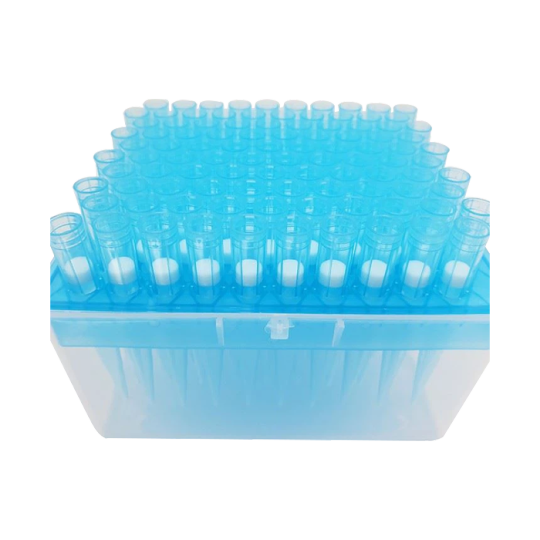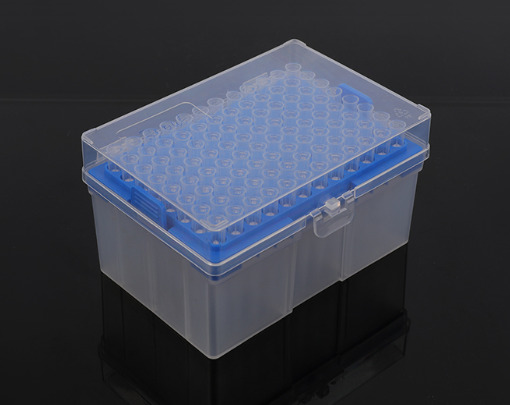#Pipette tip
Explore tagged Tumblr posts
Text
Box package 1000ul Micropipette Laboratory Pipette Tip
The boxed 1000ul micropipette laboratory pipette tips are made of high-quality materials to ensure that the tips have good durability and stability during use while meeting strict laboratory safety standards.

Contact Us Phone: +86-571-86722161 E-mail: [email protected]
1 note
·
View note
Text
Ensuring Sterility in Liquid Handling: Techniques & Equipment
In laboratories and research facilities, sterility is paramount to ensuring accurate and reliable results. Contamination from even the smallest particles or microorganisms can compromise experiments, leading to faulty data, skewed conclusions, and wasted resources. One of the critical areas where sterility must be maintained is liquid handling, which plays a fundamental role in many lab processes such as sample preparation, reagent dispensing, and solution transfer. In this blog, we'll explore the importance of ensuring sterility in liquid handling instruments, the techniques to achieve it, and the equipment designed to safeguard laboratory procedures.
Why Is Sterility Crucial in Liquid Handling?
Sterility in liquid handling is essential to prevent cross-contamination between samples, ensure the accuracy of assays, and maintain the integrity of results. In industries such as pharmaceuticals, biotechnology, and clinical diagnostics, contamination can lead to costly delays, compromised products, and even hazardous consequences for patient safety. Maintaining a sterile environment during liquid handling is a cornerstone of good laboratory practices (GLP) and quality assurance.
Sterility-Focused Liquid Handling Equipment
Advances in liquid handling technology have led to the development of specialized equipment designed to enhance sterility in lab processes. Here are a few notable examples:
Micropipettes with Filter Tips: Filter tips are designed to block aerosols and particles from contaminating samples during pipetting. These tips create a barrier between the sample and the pipette shaft, minimizing the risk of cross-contamination. Many micropipettes today are designed to work seamlessly with filter tips to ensure sterility in delicate operations like PCR, cell culture, and ELISA.
Bottle Top Dispensers: Bottle top dispensers, like MICROLIT’s BEATUS or LENTUS, are engineered to provide sterile and precise dispensing of reagents and chemicals directly from storage bottles. These dispensers often feature springless valves and recirculation systems that prevent reagent loss and ensure sterility throughout the dispensing process. For applications involving sensitive chemicals, bottle top dispensers with high chemical compatibility help maintain the purity and integrity of reagents.
Positive Displacement Pipettes: For handling viscous or volatile liquids, positive displacement pipettes offer enhanced sterility. These pipettes use a piston directly inside the pipette tip to ensure that the sample never comes in contact with the pipette itself, reducing the risk of contamination. They are especially useful in microbiology and pharmaceutical labs, where precision and cleanliness are crucial.
Automated Liquid Handling Systems: Automated liquid handling systems are increasingly being used in labs to enhance both accuracy and sterility. By automating repetitive tasks, these systems minimize human error and reduce the chances of contamination from manual handling. Many systems also come with HEPA filtration and UV sterilization options to ensure a sterile working environment.
Best Practices for Maintaining Sterility in Liquid Handling
Use Sterile Consumables: Always use sterile tips, tubes, and containers. This simple step significantly reduces the risk of contamination.
Work in Clean Environments: Use biosafety cabinets or laminar flow hoods when handling sensitive samples, especially in microbiology or cell culture labs.
Clean and Disinfect Regularly: Instruments and surfaces should be regularly cleaned with disinfectants suitable for laboratory use.
Train Personnel: Proper training in aseptic techniques and equipment handling is critical for maintaining sterility in liquid handling processes.
Conclusion
Ensuring sterility in liquid handling solutions is a critical component of any laboratory’s workflow. From aseptic techniques to the use of advanced equipment like bottle top dispensers and automated systems, maintaining a sterile environment is key to accurate, reproducible, and reliable results. By adopting the right practices and utilizing specialized equipment, laboratories can safeguard their research and avoid the costly consequences of contamination.
#liquid handling solutions#liquid handling instruments#micropipettes#micropipette#bottle top dispensers#pipette tip
0 notes
Text
“I hope she plays Hot to Go!”
“This is the lab bench…”

13 notes
·
View notes
Text
started listening to the audiobook for bad blood by john carreyrou. its a nonfiction account of the theranos and its absolutely fucking WILD. especially as a lab tech. horrifying all the way through
#howling#listenerposting#like holyyyyy shit#still not over the gluebot bit. they put a pipette tip on a glue dispenser and called it the eddison
4 notes
·
View notes
Text
everytime i set up a qpcr plate im faced with the question of if i can count to six and then eight. then i am forced to face the fact that no. i can't.
#fills a well twice and then skips a well and doesn't notice until the pipette tip numbers don't match at the end of the row#lee.txt
3 notes
·
View notes
Text
tomorrow i'm working with a new research group for the first time, i am vibrating with anxiety
#i don't know any of these people#i don't know the customs in their lab#and it's a lab that has MONEY they probably don't even reuse pipette tips#a talks#phd
4 notes
·
View notes
Text



Lab season once again so that means it's time to draw the horrible slug that I can hear whispering in my ear when I fuck up my work
#sealarts#the learned#hes a little devil on my shoulder telling me that if i use the wrong pipette tip he will turn me into a smear under his non-existent shoe#amanita is on the other being a sweetie and giving me good advice#anyway i had to try to kickstart a fountain pen which means a lot of scribbling and hes basically made of scribbles#so i felt like i had to get him on here
9 notes
·
View notes
Text
no matter where i am, if i have to do any type of writing under pressure from an upcoming deadline, i WILL preferentially clean or organise the space in which i am currently existing.
#me: i cant stay at home this evening bc i am distracted (goes to lab) oh boy look at this eyesore of a mess lemme clean this up RightNow#Let Me Fill Up 17 Boxes Of Pipette Tips At 10PM At Night Bc Thats Crucial To My Procrastination-Motivated Cleaning
2 notes
·
View notes
Text
i can be so normal about people sharing my workspace ❤️ it's totally fine if you move everything i had carefully organized and leave a mess ❤️ i will not get upset ❤️
#every time i come back into lab the buffers are empty and the pipet tip boxes are open and the pipettes are lying around and there are#samples left out at room temperature and all the centrifuges are open and there are papers and garbage everywhere ARGH#these people all have at least a master's degree so u think they'd know how to keep a lab space clean but nooo
2 notes
·
View notes
Text
Why Overhead Stirrers Are a Must-Have in Modern Labs?

What is an Overhead Stirrer ?
An overhead stirrer is a high-precision tool that labs use to mix, homogenize, suspend, and recirculate thick materials or large amounts of liquid. While magnetic stirrers work well for thin liquids and small-scale jobs overhead stirrers are more effective for thicker samples or when magnetic stirring doesn't do the trick.
These devices offer steady powerful stirring and let scientists observe and adjust reactions even as the viscosity changes during the process. This makes them essential for advanced research and industrial applications.
Neuation Overhead stirrer by Accumax deliver consistent, high-torque performance, making them a reliable choice for demanding lab tasks. These tools enable researchers to observe and manage reactions well—even when viscosity shifts during the process—making them essential for advanced research and industrial applications.
Key factors to consider before choosing an Overhead Stirrer
While choosing a suitable overhead stirrer make sure your lab mixing is efficient, steady, and doesn't cause any accidents. This is important when you're dealing with complex or high-viscosity samples. To make well informed decision, remember these couple of crucial factors
1. Viscosity Handling
The viscosity of a liquid refers to its thickness, or the resistance it faces when flowing. You require greater power from your overhead stirrer to blend a denser substance. It's essential to choose a stirrer that maintains the same speed, regardless of whether the mixture becomes thicker or thinner during the process. You need to determine whether the substances you combine resemble water and are somewhat viscous or truly thick. To achieve optimal results, you should choose a stirrer capable of mixing the thickest substances you may encounter. Stirrers made to handle approximately 10,000 mPas, 30,000 mPas, and 50,000 mPas are excellent for various laboratory activities.
2. Stirring Speed
Overhead stirrers are available with various speed options—some feature fixed speeds, while others allow for a variable adjustment range. Depending on your use case, you might require rapid mixing or gentle, measured stirring.
Seek out stirrers featuring digital speed indicators for enhanced precision and consistent outcomes.
3. Volume Capacity
Your stirrer ought to manage the largest batch volume you usually operate with. Whether you’re preparing 2 liters or increasing to 75 liters, choosing an overhead stirrer with the appropriate volume capacity is crucial for both efficiency and durability.
Accumax Overhead Stirrers are crafted to fulfill diverse laboratory requirements, providing optimal volume capacities of 25L, 40L, and 75L. Featuring strong performance and dependable mixing for various viscosities, Accumax guarantees uniform results, batch after batch.
4. Torque Power
Torque is the force that keeps the stirrer rotating, even when the mixture becomes thick or resistant. Higher torque ensures reliable mixing, especially for dense or high-viscosity samples.
For efficient and stable operation across various lab applications, the ideal torque capacities for overhead stirrers are 20 Ncm , 40Ncm and 75 Ncm
5. Interface and Control Options
Designed for precision and safety, some overhead stirrers offer reversible mixing (CW/CCW), smart control for uninterrupted operation, and automatic shut-offs for overload, current, and temperature. A large digital display ensures real-time monitoring, while the push-through shaft makes working with viscous samples effortless—perfect for advanced lab workflows.
6. Accessories and Additional Features
Modern overhead stirrers offer a variety of features and optional accessories to enhance functionality:
Reversible rotation
Automatic shutdown
Programmable mixing cycles
LED lighting or integrated timers
Digital torque/speed displays
Top Picks for Reliable Overhead Mixing Solutions
With 20+ years of experience in delivering precision-engineered benchtop equipment, Accumax brings you a stirring solution you can trust. Designed for labs that demand both performance and reliability, the iSTIR OH PRIME and iSTIR OH 75 ELITE are more than just overhead stirrers—they’re your dependable lab partners.
iSTIR OH PRIME
Engineered for day-to-day excellence, this compact powerhouse features a brushless DC motor for quiet, maintenance-free operation and a microprocessor-controlled system that ensures consistent performance across a wide range of viscosities and volumes—up to 30,000 mPas and 40L.
Key Features:
Speed range: 50–2000 RPM
Timer: 1 min to 999 hrs 59 min + continuous mode
Reversible mixing motion (CW/CCW)
Smart control for uninterrupted mixing
Safety shut-offs for overload, current, and temperature
Large digital display for real-time monitoring
Push-through shaft for ease with viscous liquids
CE certified
iSTIR OH 75 ELITEBuilt for high-demand applications, the ELITE model offers enhanced performance with the capacity to stir up to 100L and handle viscosities of up to 70,000 mPas. It carries forward all the advanced features of the PRIME, plus added strength and durability for intensive tasks.
Key Features:
Speed range: 60–2000 RPM
Timer: 1 min to 999 hrs 59 min + continuous mode
Reversible mixing motion (CW/CCW)
Smart control for uninterrupted mixing
Safety shut-offs for overload, current, and temperature
Large digital display for real-time monitoring
Push-through shaft for ease with viscous liquids
CE certified
Blog Source -- Why Overhead Stirrers Are a Must-Have in Modern Labs?
#lab equipment#pipette tips#screw cap tubes#microcentrifuge tubes#centrifuge tube#micropipettes#oem manufacturing#micropipette tips#sustainable labware
0 notes
Text
In the realm of laboratory equipment, even the smallest components can significantly impact experimental outcomes. One such crucial component is the pipette tip. Often overlooked, the type of pipette tip used can influence the accuracy, precision and integrity of experimental results. Among the choices available, two main types stand out: Ordinary and Filtered pipette tips. Understanding their differences and when to use each is essential for any researcher striving for reliable and reproducible data.
#micropipettes#liquid handling#pipettes#micropipette price#liquid handling instrument#pipette filler#bottle top dispenser#pipette tip#pipette tips
0 notes
Text
Practice Safe Sun All Summer With These Editor-Approved Sunscreens
Summer is approaching, and the sun is in full effect, so don’t forget the sunscreen! Summer weekends folks are flocking to the beach, the pool and in general enjoying the outdoors, but don’t let the sun get the best of you. Even though sunscreen should be a daily habit, during the summer when the sun is at it’s peak we should be ever mindful of taking cover by practicing safe sun. To that end,…
#african american beauty advice#beautyblender#beautystat#biossance#black beauty brands#black girl sunscreen#drunk elephant#elf cosmetics#pipette#shiseido#skin care advice#Skin Care Products#skin care tips#supergoop#tracey brown beauty expert
0 notes
Text
Just dropped a lid to one of my lab standards behind a big table that I can't move without unplugging lab equipment.
So that's fun.
0 notes
Text
Regarding the last post, I'm NOT exaggerating when I say it's literally gold btw.
#like. there is technically actual elementla gold in this stuff. but its normally red or purple.#and turns black when it aggregates. which us what im trying to make it do#so WHY are my pipette tips becoming gold plated instead 😭#i hate chemistry
1 note
·
View note
Text
Recycling Initiatives for 1250μL Pipette Tips
The use of 1250μL pipette tips is ubiquitous in laboratories around the world, serving as essential tools for precise liquid handling. However, the environmental impact of single-use 1250μL pipette tips is a growing concern, as millions of these plastic items are discarded each year. Addressing this issue requires a multifaceted approach that includes proper disposal methods, recycling initiatives, and the exploration of alternative materials.
One of the primary challenges with pipette tips is that they are often made from non-biodegradable plastics, which can take hundreds of years to decompose in landfills. To mitigate this impact, laboratories should implement strict protocols for the disposal of these pipette tips. Instead of throwing them in regular trash bins, labs can establish designated waste containers specifically for plastic waste. This separation not only helps in managing waste more effectively but also facilitates recycling efforts.
Recycling them is a viable option that many laboratories are beginning to explore. Some manufacturers have initiated programs that allow users to return used pipette tips for recycling. These programs often involve collecting the tips and sending them back to the manufacturer, where they can be processed and repurposed into new products. By participating in such initiatives, laboratories can significantly reduce the number of 1250μL pipette tips that end up in landfills.

1 note
·
View note
Text
300ul Racked Filter Micro Pipette Tips
300ul rack-mounted filtered micropipette tips are precision tools designed for laboratory micro-liquid manipulation. The suction head is uniquely designed and has an efficient filtration function, which can effectively remove impurities and particles in the liquid, ensuring the accuracy and reliability of experimental results.

Contact Us Phone: +86-571-86722161 E-mail: [email protected]
0 notes